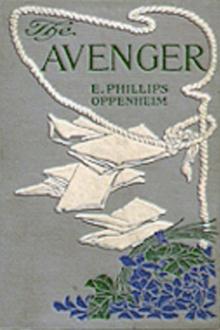Hitler's Terror Weapons, Brooks, Geoffrey [cat reading book .txt] 📗

Book online «Hitler's Terror Weapons, Brooks, Geoffrey [cat reading book .txt] 📗». Author Brooks, Geoffrey
“Of course, a 1000-tonne raid has a different effect. But the effect of the German bombardment lies in its persistency. It’s like toothache. Finally you have to do what you should have done all along. You go to the dentist. The V-weapons bombardment will be continued come what may and it will increase each month until Britain comes to her senses, that is to say, until the English inner circle sweeps aside those responsible for this insane British policy and clears the way for an understanding with us.”9
This outlook summarizes the philosophy behind the V-weapons campaign. Rather than use the weapon against troop formations on the various fronts rapidly compressing the territory remaining in German hands, the Third Reich leadership resolved to rely entirely on the psychological effect of the terror bombardment of London and the Home Counties with the objective of forcing the British Government to the negotiating table. An unspoken hope existed that, if that were not to be the case, then perhaps the British Government might in desperation resort to some act so escalating the slaughter of German civilians that Hitler could justifiably respond with his ultimate weapons of terror.
As the bombardment entered its third week the intermittent attacks continued day and night, imposing a severe strain psychologically on the inhabitants of London. The flying bombs had already killed nearly 2,000 Londoners, although this was not a large casualty figure compared with any single great raid on a German city at that time.
By 6 July 1944 the V-1 provoked a response. In a Most Secret minute10 to the Chiefs of Staff on that day, Churchill wrote:
“If the bombardment of London really becomes a serious nuisance and great rockets with far-reaching and devastating effect fall on many centres of Government and labour, I should be prepared to do anything that would hit the enemy in a murderous place…. It may be several weeks or even months before I shall ask you to drench Germany with poison gas, and if we do it, let us do it 100 per cent …”
The Joint Planning Staff considered the proposal but advised that “if the Allies initiated chemical warfare, the Germans would immediately retaliate both in the field and against the United Kingdom. London would be the primary target and could expect to be attacked by flying bombs filled with gas and by up to 120 long-range bombers carrying chemical payloads.” In the circumstances, the JPS was not prepared to recommend the use of chemical or biological weapons.
Germany had huge stocks of battlefield gases, together with nerve gases which were unique to the Third Reich, but a gas war with the British was not what the V-1 campaign was intended to achieve. The Luftwaffe could have launched a full-scale surprise attack at any time when it happened to suit their purposes. The Army and Luftwaffe had discussed at Münster gas depot the possibility of loading the V-1 with phosgene for use in the event of a gas war and subsequently experiments with a 1-tonne warhead of phosgene were found satisfactory. No tests were carried out with the V-2 but a payload of 2½ tonnes is mentioned in documents. The Germans had at their disposal in the west at least 12,000 tonnes of the nerve gas Tabun and vastly more of the nerve gas Sarin, which is four times more potent. Most of this material was kept in semi-readiness in 250-kg bombs. A Sarin bomb of this size was thought likely to destroy all life within several square kilometres of the exposure point.11
Over the period from 13 June to 5 September 1944 10,632 V-1 flying bombs were launched from Northern France of which 5,602 (52.7%) exploded in the area intended. Fighters and AA batteries accounted for 3,230 projectiles, collisions with barrage balloons brought down 231 and 1015 were failures.
From 16 September 1944 to 14 January 1945 about 1400 V-1s were fired from the North Sea coast of which 301 (21.5%) found their target area successfully.
During March 1945 a success rate of 47 hits (17%) was achieved with the 275 flying bombs despatched from western Holland.
During the defence of the Rhine in 1944/1945 11,988 V-1s were fired at Antwerp, Brussels and Liège. 2448 hits were obtained (20.4%).
In England the final death toll from the V-1 was put at 6,860 dead and 17,981 injured, Belgium suffered 4,152 dead (3,470 civilians and 682 military). In order to counter the offensive Britain committed eight fighter squadrons, 480 barrage balloons and 438 AA guns at home, while 40% of the RAF bombing effort was diverted to destroying the launching ramps.
The best system of defence involved (i) anti-V1 fighter patrols over the Channel, (ii) massed AA batteries along the coast, (iii) a second line of fighter patrols between the AA guns and London and (iv) a deep concentration of barrage balloons at the approaches to London. The defence expenditure was nearly four times greater than the operational cost of the offensive.12
The main problem for the attackers was to obtain precise information regarding the fall of the projectiles, and attempts were made to improve accuracy by the installation of a remote control gear.
At a meeting in November 1944 at Reichsführer-SS HQ Höhenlychen, Hauptsturmführer Otto Skorzeny argued energetically for the immediate implementation of the V-1 project against New York.13 Himmler promised to speak on the matter to Hitler and Grossadmiral Dönitz remarked, “I see here a new and big chance of bringing about a change in the course of the war.” He could hardly have been speaking of half-a-dozen conventional V-1 flying bombs and must have meant using them with a poison gas payload. According to the German historian Gellermann, in February 1945, after deciding on that course of action as a reprisal for Dresden, Hitler was talked out of the idea by Keitel and Jodl.
The Americans were well informed of these proposals through their Enigma decryption operation and spies and were concerned that even a Type





Comments (0)